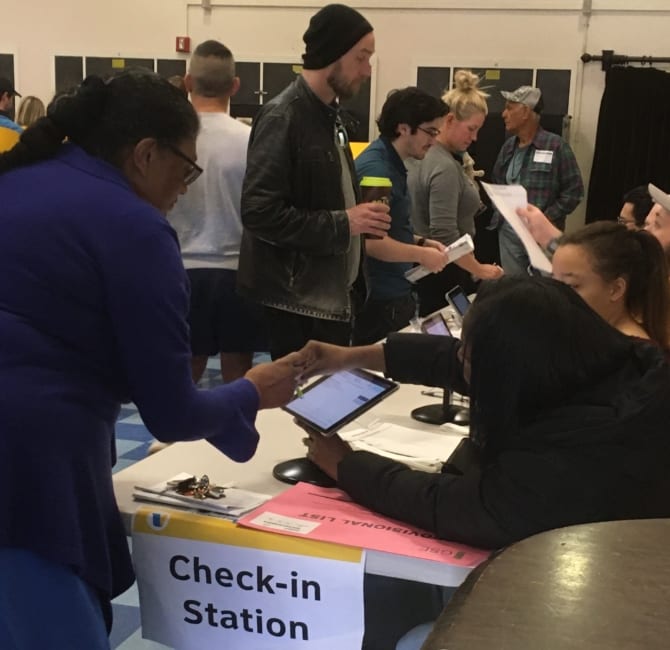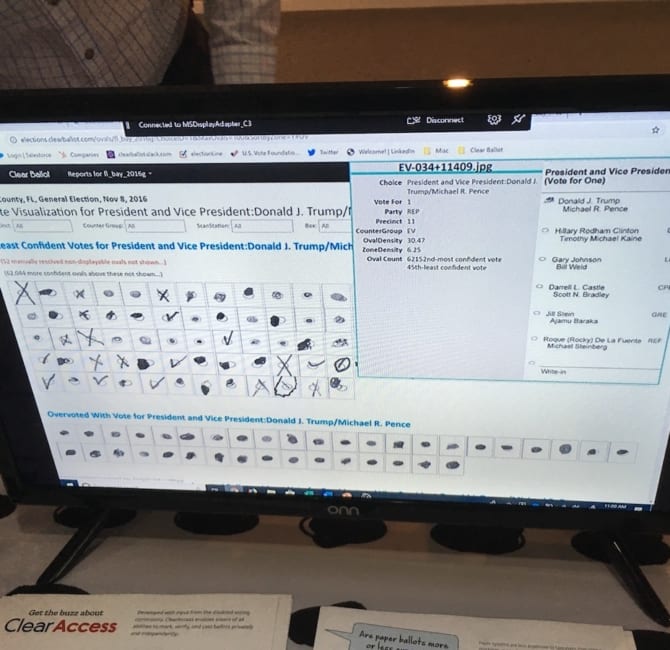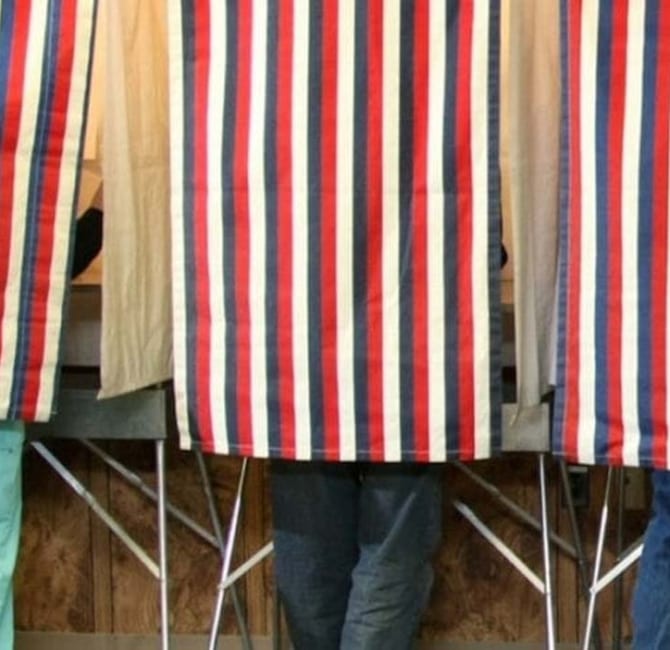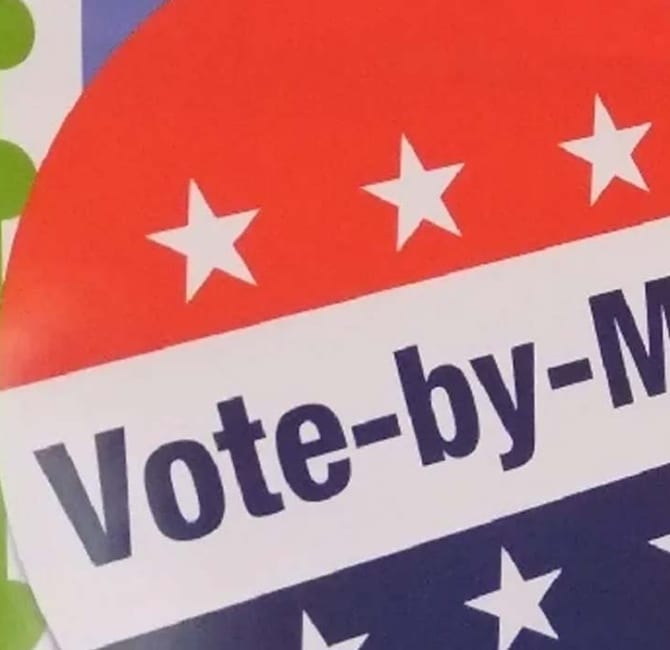Technology Failures Add to Problems in June’s Pandemic Primaries
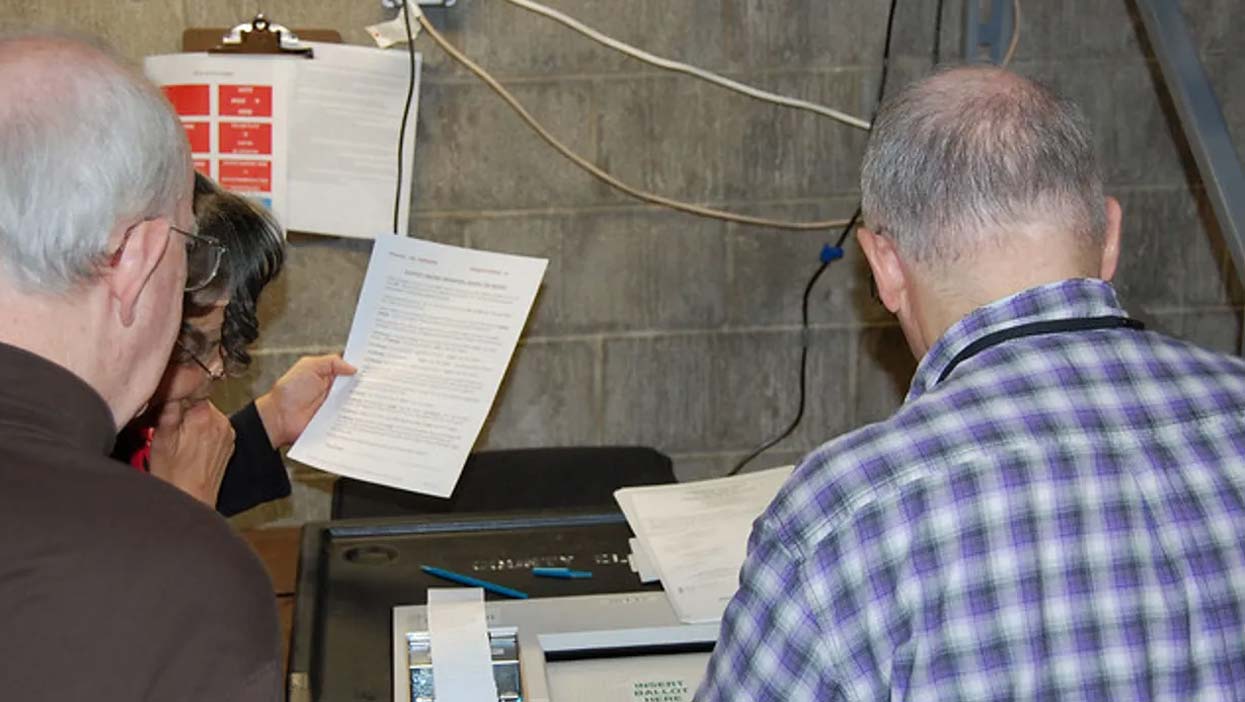
(Voting technology in Fairfax County, VAPhoto credit: Fairfax County)
Washington, D.C.’s primary election on June 2 experienced many obstacles: Police officers told voters waiting in line that they were violating a curfew; the protests against police violence continued throughout the city; and fears of the spread of COVID-19 remained. One less-well-known primary breakdown happened when the city’s high-tech tools intended to help people vote failed, according to a preliminary report from the D.C. Board of Elections.
“The Vote4DC Mobile App proved incompatible with various types of mobile devices used by some voters. The application’s vendor was unable to triage and correct the problems,” the June 16 report’s executive summary said. It added, “Many voters who timely completed their ballot requests could not track the status of their ballots. This led to understandable confusion and frustration.”
Some of that confusion prompted voters to overwhelm 20 polling places. The report concluded that the city would have to do many things to prepare for the fall’s election, from mailing every voter a ballot, to doubling the number of early voting centers, to modernizing its computers to process absentee ballots and support in-person voting, and more. Even though the election officials handled many unprecedented challenges, such as a quadrupling of absentee ballot requests and responding to a poll worker exodus in the pandemic, it wasn’t good enough.
“Without the additional resources to cover the [fall’s] expected record-shattering voter turnout, the long lines and voter frustrations cannot be adequately addressed,” it said.
The new disclosures about what impeded primary voters amid protests and a pandemic, as well as recommendations by election officials to the mayor and city council, are not unique to Washington. As 2020’s primaries continue with an unprecedented shift to mail-based voting east of the Rockies, revelations keep emerging about issues in intricacies of the voting process—including new technology-based failures or unnecessary complexities.
In South Carolina’s June 9 primary, the state’s website allowed voters to download an absentee ballot application. But if that voter used an Apple computer without Adobe software, then the form would not open, said Duncan Buell, a Richland County election commissioner who also chairs the computer science department at the University of South Carolina in Columbia. (In addition to that complication, 12,000 of the 24,000 voters who applied online for a mail-in ballot in his county didn’t properly finish the process, he said. They didn’t print, sign and mail it.)
In Pennsylvania’s June 2 primary, the state portal to apply to vote from home gave voters two options: apply for an absentee ballot or a mail-in ballot. The absentee ballot application form requires stating an illness and the name of the voter’s doctor, while the mail-in ballot does not. The absentee form appears first (to the left), noted Phil Keisling, Oregon’s former secretary of state and chair of the National Vote at Home Institute, who said this portal was confusing and discouraging to voters who didn’t want to share personal information.
In Georgia’s June 9 primary in metro Atlanta, Fulton County election officials lost 8,000 absentee ballot applications, the Washington Post said. Apparently, their computers crashed after being overloaded with data from voters accompanying the online application process.
Georgia’s Republican Secretary of State Brad Raffensperger wants the state election board, which he chairs, to take over administering elections in the blue epicenter county for fall’s general election. He also announced the state would not be mailing voters mail-in ballot applications for the fall, drawing criticism from voting rights activists who said that would increase lines at the polls.
The picture that is emerging in states and counties that have little experience with a majority voting by mail is that the process is more complicated than anticipated for all involved: voters, their advocates, campaigns, administrators and vendors. The process, including key steps that are not widely seen by the public, keeps surfacing more tech-based complications—problems that can be compounded by political decisions.
This trend can also be seen recently with the post-Election Day process of counting votes.
In Philadelphia, hand-marked absentee ballots that are poorly filled in—or seen by election workers as not likely to be accurately scanned by the tabulators—must be copied before scanning. “We object to the way that many, likely thousands, of ballots were duplicated,” said Rich Garella of Protect Our Vote Philly, as Philadelphia and other Pennsylvania counties were still counting votes two weeks after the June 2 primary. “We object to watchers being deprived of the right to view ballots during the canvass.”
During a shorter counting window in Georgia, watchers in Morgan County discovered that a newly deployed ballot scanner-and-tabulator machine (Dominion’s ImageCast) was not detecting a handful of votes on absentee ballots (there were erratically inked Xs instead of clearer filled-in ovals). The same issue was seen in several other counties, underscoring prior doubts about trusting the results from the newest generation of voting technology.
Three Republican congressional candidates in the state’s 6th district wrote a joint letter on June 17 to county election officials asking them to reexamine the ballots before certifying the results, said Garland Favorito of VoterGA.org, who added that the absence of auditing the primary results was “the most serious issue.”
“Georgia counties are now set to certify election results without resolving adjudication errors and verifying the system counted all mail-votes correctly,” he said. “Mail-in votes represent about 40 percent of the votes cast.”
These tech-based issues were not confined to mail-in balloting. The same new technology used to check in voters at polling places in Georgia’s June 9 primary and in Los Angeles’s March 3 primary—so-called e-poll books—also confounded poll workers and voters, though for somewhat different reasons. In LA, the e-poll books from KnowInk had trouble syncing with California’s voter database (a problem in 15 counties across the state), and poll workers also said a directory to look up a voter’s registration was not expedient.
In Georgia, there were also widespread reports of poll workers not being familiar with how to use the new poll books—as well as the new ballot-marking computers.
A former executive of a voting technology company who said that he had talked to one Georgia official overseeing the deployment of its new voting system said that the state never retrained poll workers after it twice postponed its primary, and then, because of COVID-19’s social distancing, had to use fewer in-person voting machines than would have been optimal. In other words, there were fewer poll workers willing to work in a pandemic, and they forgot what they learned.
Whether states and other jurisdictions—like Washington, D.C., or LA County—will heed the lessons from the primary remains to be seen. In Washington’s preliminary post-primary report, the board of elections pledged to do better for the fall—if it is given resources to do so.
“Holding an election [primary] under these conditions was uncharted territory and forced us to condense 18 months of planning into less than eight weeks as a result of COVID-19,” it said. “While we acknowledge there were significant challenges, we now have a clearer vision of how to proceed for the [fall] general election.”
But elsewhere, such as in red-run states like Ohio, partisan legislators appear to be going in the opposite direction. On June 10, Ohio’s House passed H.B. 680, which, among other things, moved up the deadline for voters to return postmarked mail-in ballots—to one week ahead of November 3’s Election Day. In most states, that deadline falls on Election Day, the same day as in-person voting.
Should that bill become law, the change of the timetable will add to pressures facing voters—from navigating the process to issues with new technology—that, taken together, add complexity rather than simplify voting.
Also Available on: www.nationalmemo.com



